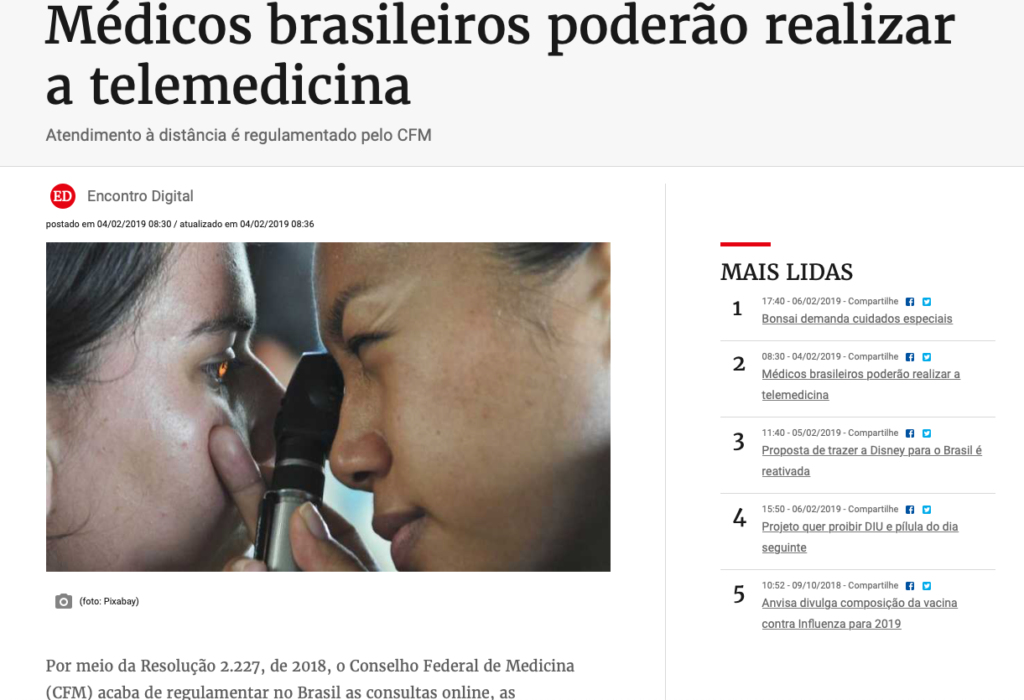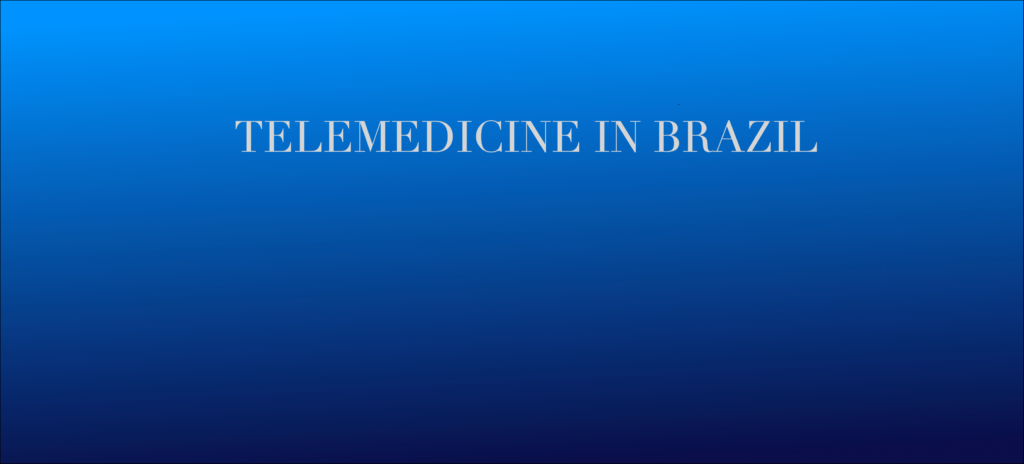From the desk of JD Faccinetti cofounder – This article on the Brazilian Medical Council recent decision to approve telemedicine services comes to us from Nathalia Kneipp in Brazil. The article was recently published in Encontro Magazine (Revista Encontro) in their health section under the headline “Brazilian Doctors can now practice telemedicine”. The article offers an interesting look at the regulatory and reporting environment for telemedicine as technology continues to offer new opportunities in patient services. Click here to read the original version in Portuguese.
We did a cursory translation of the original text in Portuguese, which follows:
 “Through Resolution 2,227, dated 2018, the Federal Council of Medicine (CFM) has recently regulated online consultations, telesurgeries, and telediagnosis, among other forms of distance care. The text establishes telemedicine as an exercise in medicine mediated by technologies for assistance, education, research, prevention of diseases, injuries and health promotion.
“Through Resolution 2,227, dated 2018, the Federal Council of Medicine (CFM) has recently regulated online consultations, telesurgeries, and telediagnosis, among other forms of distance care. The text establishes telemedicine as an exercise in medicine mediated by technologies for assistance, education, research, prevention of diseases, injuries and health promotion.
In its press release, the CFM says the possibilities are “substantial”, but doctors, patients, and managers need to follow to the recommendations. In the field of public health, the CFM says that this type of innovation is “revolutionary” by allowing remote care, through digital platforms. In addition to bringing quality health to cities in the interior of Brazil, which often can’t attract physicians, telemedicine also benefits large centers because it reduces bottlenecks in the conventional system caused by the great demand caused by the migration of patients in search of treatment”.
Medical confidentiality –To ensure medical confidentiality all care should be recorded and stored, with a report sent to the patient. The agreement also requires the recording and transmission of images and data to be expressly authorized by the patient (or his / her legal representative)
Teleconsultation –Teleconsultation is defined as a remote medical consultation, mediated by technologies, with doctor and patient located in different geographic spaces. The first consultation should be face-to-face, but in the case of geographically remote communities such as forests and oil platforms, it may be virtual, provided the patient is accompanied by a health professional. In long-term visits or chronic diseases, face-to-face consultation are recommended at intervals not exceeding 120 days. In the case of distance medical prescription, the resolution establishes that the document must contain the physician’s identification, including name, registration number and address, identification and patient data, in addition to date, time and a digital signature of the physician.
Telediagnóstico The issuance of a report or an examination opinion, through graphics, images, and data sent through the Internet is defined by the resolution as a diagnosis. The procedure must be performed by a physician with Specialist Qualification Register in the area related to the procedure.
Teleinterquery –Teleinter consultation occurs when there is an exchange of information and opinions among physicians, with or without the presence of the patient, for diagnostic or therapeutic, clinical or surgical assistance. It is very common, according to the CFM, when a family physician and community needs to hear another expert’s opinion about a particular patient’s problem.
Telesurgery In telesurgery, the procedure is done by a robot, manipulated by a doctor who is in another location. The resolution, however, establishes that a physician, with the same qualification as the remote surgeon, participates in the on-site procedure, next to the patient, to ensure that surgery is continued if there is any intercurrence, such as a power outage. The surgical conference call, by synchronous video transmission, is also allowed by the standard, provided that the group receiving the images, data, and audios is formed by doctors.
Teletriage –This occurs when the physician makes a remote assessment of the symptoms.
Telemonitoring – Finally, telemonitoring, very common, according to the council, in nursing homes for the elderly, will allow a doctor to evaluate the health conditions of residents, avoiding unnecessary trips to emergency care units. The remote doctor can, for example, find out if a fever of a patient who is already accompanied by him deserves a trip to the hospital.
Safety – To ensure the security of information, the text establishes that patients’ data and images must be transported on the Internet with infrastructure that ensures safekeeping, handling, integrity, truthfulness, confidentiality, privacy”
© 2019 – 2024, J D Faccinetti. All rights reserved.
